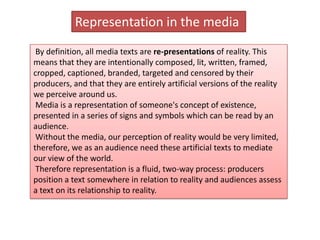This document discusses representation in media and its importance. It makes three key points:
1) Media representations are intentionally constructed versions of reality, not objective realities themselves.
2) Media representations shape our understanding of the world by extending our experiences and perceptions.
3) The relationship between media producers, texts, and audiences is a two-way process where meanings are negotiated.






